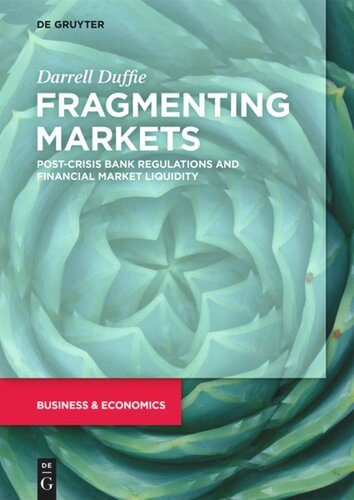

Most ebook files are in PDF format, so you can easily read them using various software such as Foxit Reader or directly on the Google Chrome browser.
Some ebook files are released by publishers in other formats such as .awz, .mobi, .epub, .fb2, etc. You may need to install specific software to read these formats on mobile/PC, such as Calibre.
Please read the tutorial at this link: https://ebookbell.com/faq
We offer FREE conversion to the popular formats you request; however, this may take some time. Therefore, right after payment, please email us, and we will try to provide the service as quickly as possible.
For some exceptional file formats or broken links (if any), please refrain from opening any disputes. Instead, email us first, and we will try to assist within a maximum of 6 hours.
EbookBell Team

4.4
92 reviewsPost-crisis capital regulations and new failure-resolution rules increased the funding costs that are borne by bank shareholders, and thus the cost to buy-side firms for access to space on the balance sheets of large banks. A policy implication is the encouragement of market infrastructure and trading methods that reduce the amount of space on bank balance sheets that is needed to conduct a given amount of trade.
Using models and evidence, this book addresses the implications for financial-market liquidity of these regulations for systemically important banks and argues that current rules do not allow for potential levels of market efficiency and financial stability. In this insightful analysis of the impact of regulation on financial market efficiency post-2008, the author argues that bank capital levels could actually be pushed higher while still improving the liquidity of markets for safe assets such as low-risk fixed-income instruments by relaxing the leverage-ratio rule and increasing risk-based capital requirements.